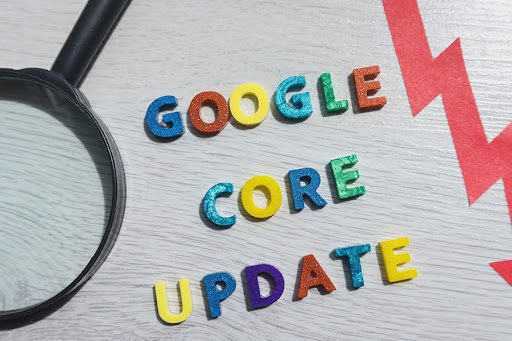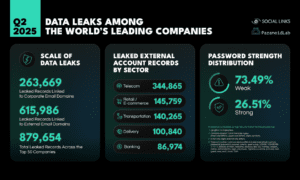Google’s October 2023 updates have been the talk of the digital town, and for good reason. Two major updates were released back-to-back, leaving webmasters and businesses scrambling to understand their impact. What can you do about these crucial changes?
Unpacking the Rationale Behind Google’s October 2023 Updates
Regarding Google’s algorithm updates, the “why” is often as important as the “what.” Understanding the motivations behind these changes can provide invaluable insights for webmasters, SEO professionals, and content creators alike. Let’s delve deeper into the rationale behind Google’s October 2023 Core and Spam Updates.
Based on prior updates, the most important thing is being proactive about understanding Google’s E-E-A-T guidelines, staying compliant with their policies, and closely monitoring your metrics, which can make all the difference in weathering the storm of Google’s algorithm updates.
The Core Update: A Quest for Quality
While Google tends to be tight-lipped about the specifics of its Core Updates, the overarching goal is to elevate the quality of content appearing in search results. Google aims to reward websites that offer users high-quality, relevant, and informative content. This aligns with Google’s long-standing mission to organize the world’s information and make it universally accessible and useful. By doing so, Google hopes to improve the user experience, ensuring that searchers find what they’re looking for quickly and easily.
The Spam Update: Cleaning the Digital Streets
On the flip side, the Spam Update serves as Google’s digital broom, sweeping away content that doesn’t meet its quality standards. This update targets low-quality, deceptive, and auto-generated content across multiple languages. The objective is to create a cleaner, more reliable user search experience. Websites that engage in spammy practices, such as keyword stuffing, cloaking, or deceptive redirects, will likely be penalized. This is part of Google’s broader effort to maintain the integrity of its search results and protect users from misleading or harmful information.
The Balance Between Reward and Penalty
What’s interesting is the balance Google strikes between rewarding quality and penalizing inadequacy. The Core Update and the Spam Update are two sides of the same coin, working in tandem to refine the search experience. While the Core Update elevates content that aligns with Google’s quality criteria, the Spam Update demotes content that falls short. This dual approach ensures that users are presented with information that is not only high-quality but also trustworthy and reliable.
The Endgame: A Better Search Experience for All
Ultimately, both updates aim to create a better search experience for users. By rewarding high-quality content and penalizing low-quality spam, Google is continually fine-tuning its search algorithms to meet the needs of its diverse user base. This is crucial in an age of abundant information, but the quality can be wildly inconsistent. Search Engine Journal reminds us, we need to be patient with this update.
Key Takeaways: Navigating Google’s October 2023 Updates
Understanding Google’s algorithm updates is one thing, but knowing how to adapt your strategies accordingly is another. Here are some key takeaways as you navigate the ever-changing SEO landscape.
Are You E-E-A-T Ready? The Importance of Quality Content
Google’s focus on Expertise, Experience, Authority, and Trustworthiness (E-E-A-T) is more than just an acronym; it’s a framework for evaluating the quality of your content. The question is, how does your content stack up?
- Expertise: Are you an expert in your field? Does your content reflect that expertise?
- Experience: Does your content offer a user-friendly experience? Is it easy to read, navigate, and understand?
- Authority: Are you considered an authority in your industry? Do other reputable sites link to your content?
- Trustworthiness: Is your content accurate and reliable? Do you cite reputable sources and provide evidence to back up your claims?
If you confidently say that your content meets these criteria, you’re well on your way to being E-E-A-T ready.
Have You Reviewed Google’s Latest Policies? Compliance is Key
The Spam Update is particularly unforgiving for websites that don’t adhere to Google’s quality guidelines. Non-compliance can result in penalties, including a drop in search rankings or even removal from search results altogether. Here are some questions to consider:
- Content Quality: Do you use spammy practices like keyword stuffing or cloaking?
- User Experience: Does your site have too many ads, making it difficult for users to find the content they’re looking for?
- Deceptive Practices: Are you using misleading redirects or displaying different content to search engines than to users?
If you need clarification on any of these points, it’s time to review Google’s policies and make necessary adjustments.
Are You Monitoring Your Metrics? Keep an Eye on the Ball
Algorithm updates often lead to fluctuations in search rankings, so monitoring your metrics closely during these periods is crucial. Key performance indicators (KPIs) like organic traffic, click-through rates, and search rankings can provide valuable insights into how the update affects your site.
- Traffic Trends: Are you seeing a sudden drop or spike in organic traffic?
- Keyword Rankings: Have your keyword rankings changed significantly since the update?
- User Behavior: Are users spending more or less time on your site? What about bounce rates?
By closely monitoring these metrics, you can quickly identify issues and opportunities, allowing you to adapt your SEO strategy as needed.



































